Toshiba Camileo X400 Review
Toshiba Camileo X400
Toshiba's Camileo X400 bundles a lot for the money.
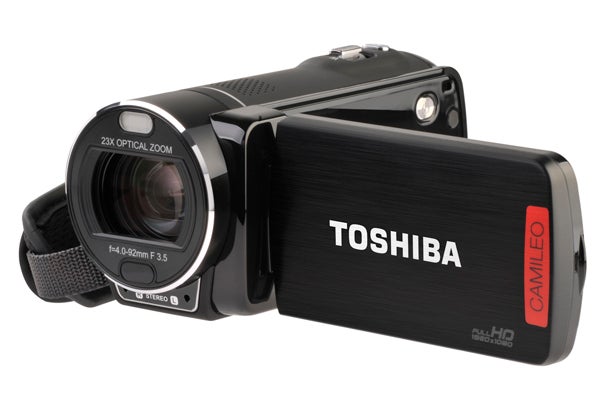
Verdict
Pros
- Generous bundled accessories
- Keen price
- 23x optical zoom
Cons
- Limited manual control
- Mediocre image quality
- Clunky icon-driven menu
Key Specifications
- Review Price: £143.00
- Back-side illuminated CMOS sensor with 5MP
- 1080/30p MP4
- SDXC-compatible SD memory slot
- 23x optical zoom
- LED video light
The X400 has a reassuring mass about it, and it comes in a box that has a premium velveteen air. The bundled accessories are generous, too. There’s a carry pouch with a shoulder strap included, a remote control, and even a cable to connect the camcorder’s mini HDMI port to the regular HDMI on a HDTV. All of this belies the camcorder’s sub-£150 price.
The base specification isn’t bad, either. Toshiba rarely quotes the size of its sensors, so all we know about the X400’s CMOS is that it has 5MP and is back-side illuminated. But the former is more than enough for Full HD, and the latter has positive implications for performance in low light. The top shooting resolution is Full HD at 30 progressive frames per second. But there are other options, including 720p and VGA at 30 frames per second, as well as 720p at 60 frames per second. Still images can be captured at 3, 5 or 16MP, with the latter clearly using a large amount of interpolation.
Footage is captured to SDXC memory card, although there is a X416 variant available in some parts of the world which comes with 16GB of memory on board. A 16GB allocation will be enough for around four hours of footage at the top quality setting. The format used is MP4, rather than AVCHD, but this is still a highly compatible format for editing.
The X400 is a cut above most budget camcorders when it comes to zoom. It offers a 23x optical telephoto, rather than the digital-only variety, although this is augmented by a 120x digital zoom you can’t turn off. The image stabilisation is still electronic, though, and onlly has one mode. Although it’s better than nothing, we didn’t find it tremendously effective.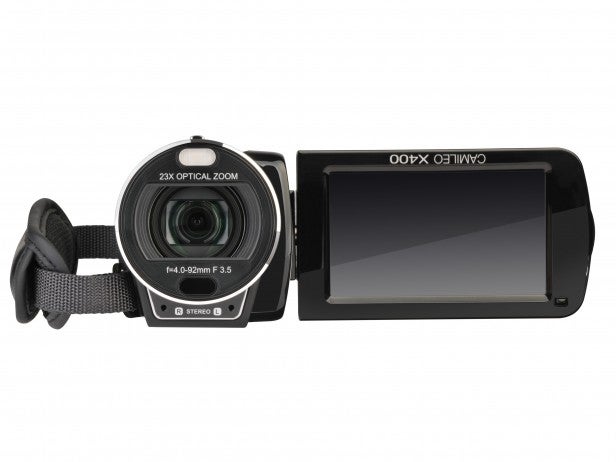
All of the X400’s settings are accessed via an icon-driven menu which is called up on the 3in touchscreen. Three icons at the top provide rapid access to a selection of frequently-used functions. One toggles the built-in video light, which has limited range but is still welcome in a budget camcorder. There’s also a setting Toshiba calls Digital Light. This is essentially a video gain booster, which brightens the image in poor illumination, at the expense of some image quality. A second button lets you switch quality modes, and a final button enables backlight compensation, always a handy setting to have readily available.
The remaining functions are only accessible via the full menu. This is also icon-driven, which makes some functions hard to find as their icons are a little obscure. For example, image stabiliation and motion detection use an icon of a hand and a person, but both are leaving trails so you have to think twice about which is which. Fortunately, each icon requires two clicks to access; the first click merely brings up a text description at the bottom of the screen, so you can check you have the right function before committing.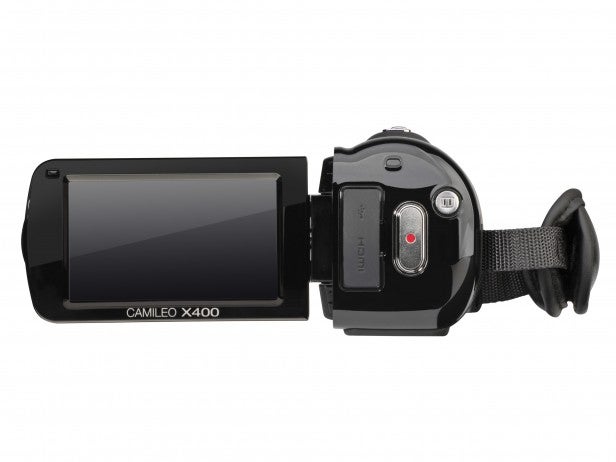
There aren’t many of the manual settings we usually expect from a camcorder, either. There’s no facility for manual focusing, nor direct control over exposure, let alone shutter and iris. White balance presets include sunny, fluorescent and tungsen alongside the fully automatic option, but no manual setting. Even the range of scene modes is pretty meagre, with just night, backlight compensation and soft skin mode included in this section. You do get a macro mode and control over how the exposure is measured, with auto, centre and spot options. There’s also face tracking available and a pre-rec buffering function to help prevent you missing a shot due to being slow on the shutter.
But the majority of options are aimed more at fun than supreme camcorder control. You can set the camcorder to trigger recording when motion is detected. There’s a slow motion option, which grabs lower-resolution video at high speed then plays it back at normal speed. The time lapse function grabs a frame at intervals of one, three or five seconds, then stitches them together, so you can capture paint drying or grass growing.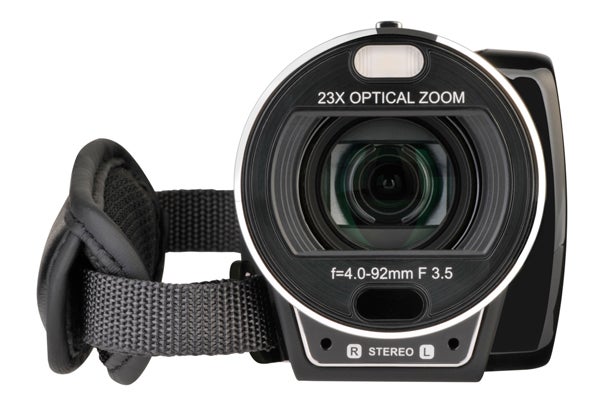
Surprisingly, the X400 also incorporates a minijack microphone input. This isn’t accompanied by an accessory shoe for attaching an external mike to the camcorder body. There are also no controls for adjust audio manually, and no minijack for hooking up headphones. But at least you can attach a lapel narration microphone if you want to.
Although we’ve not been hugely impressed by the image quality afforded by previous Toshiba Camileos, the X400 provides surprisingly decent performance. In good lighting, colours are bright and faithful, with a relatively sharp picture. Low light performance is a little less exciting. Although the X400 does maintain a reasonable level of brightness, but the white balance isn’t very accurate and there’s a noticable loss in detail.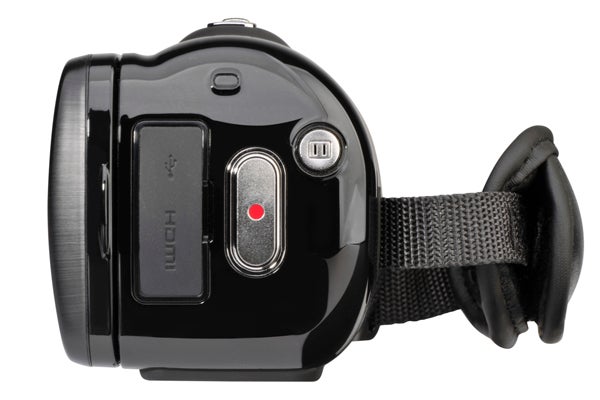
Verdict
Toshiba’s Camileo X400 doesn’t quite live up to the quality its seemingly sturdy build promises. But its sub-£150 price makes what it does have to offer decent value. There’s certainly a lot more here than the pocket Internet models costing similar money or less. But for around £50 more you could opt for a budget model from a bigger brand, such as JVC’s Everio HD GZ-E205, which will offer a step up in image quality. So if you’ve only got £150 to spend, the Camileo X400 provides quite a bit of camcorder for your money, but if you can scrape together a little more then we’d recommend aiming a little higher.
Trusted Score
Score in detail
-
Design 7
-
Image Quality 6
-
Features 6
-
Value 10
-
Perfomance 6
Image Processor
| Image Sensor | Back-illuminated CMOS with 5Mpixels |
| Image Sensor Quantity | 1 |
Lens Features
| Optical Zoom (Times) | 23x |
| Digital Zoom (Times) | 120x |
Video Recording
| Recording Media | SD card |
| Video Capture Format | MP4 |
| Max Video Res | 1920 x 1080 |
| Image Stabilisation | Electronic |
General Features
| LCD Screen Size (Inch) | 3in |
| On-board Storage (Gigabyte) | 0.128GB |
| On-board Microphone | Stereo |
A/V ports
| HDMI | Mini |
| USB 2.0 | Yes |
| Audio / Video Out | No |
| Audio / Video In | No |
| External Microphone | Yes |
Physical Specifications
| Weight (Gram) | 295g |


